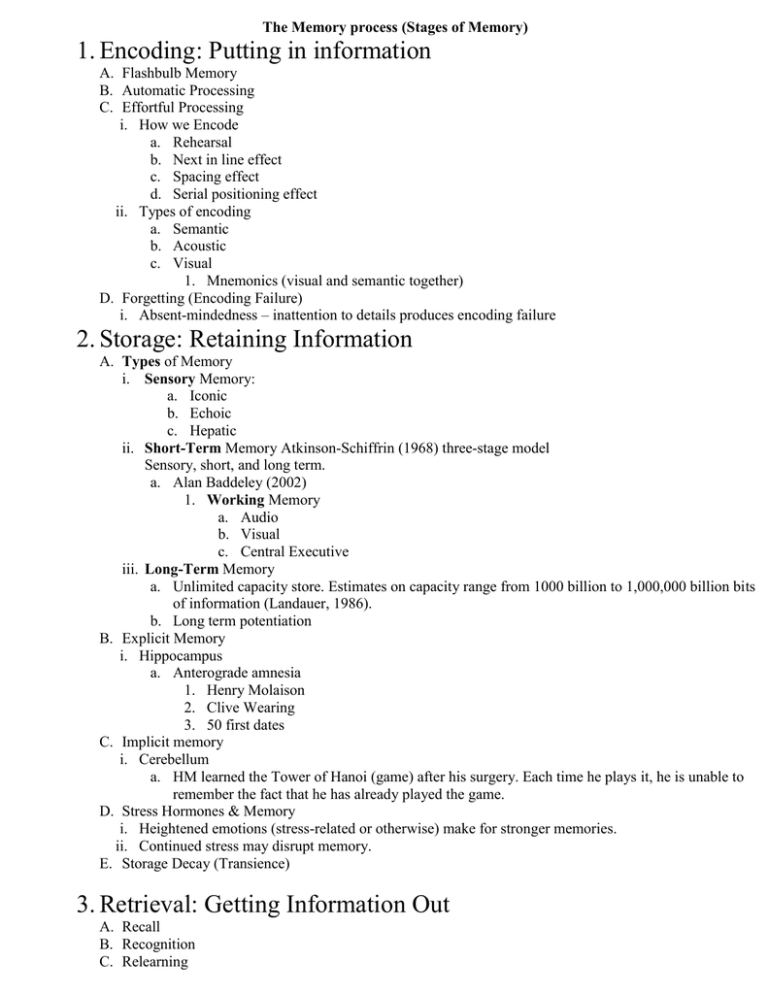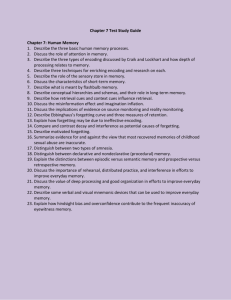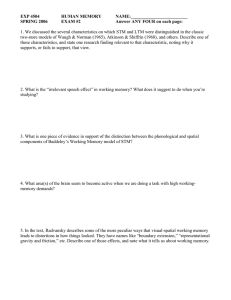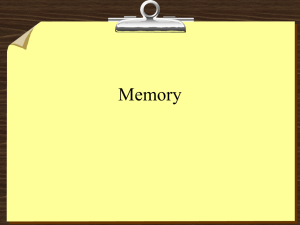The Memory process (Stages of Memory) Encoding: Putting in
advertisement

The Memory process (Stages of Memory) 1. Encoding: Putting in information A. Flashbulb Memory B. Automatic Processing C. Effortful Processing i. How we Encode a. Rehearsal b. Next in line effect c. Spacing effect d. Serial positioning effect ii. Types of encoding a. Semantic b. Acoustic c. Visual 1. Mnemonics (visual and semantic together) D. Forgetting (Encoding Failure) i. Absent-mindedness – inattention to details produces encoding failure 2. Storage: Retaining Information A. Types of Memory i. Sensory Memory: a. Iconic b. Echoic c. Hepatic ii. Short-Term Memory Atkinson-Schiffrin (1968) three-stage model Sensory, short, and long term. a. Alan Baddeley (2002) 1. Working Memory a. Audio b. Visual c. Central Executive iii. Long-Term Memory a. Unlimited capacity store. Estimates on capacity range from 1000 billion to 1,000,000 billion bits of information (Landauer, 1986). b. Long term potentiation B. Explicit Memory i. Hippocampus a. Anterograde amnesia 1. Henry Molaison 2. Clive Wearing 3. 50 first dates C. Implicit memory i. Cerebellum a. HM learned the Tower of Hanoi (game) after his surgery. Each time he plays it, he is unable to remember the fact that he has already played the game. D. Stress Hormones & Memory i. Heightened emotions (stress-related or otherwise) make for stronger memories. ii. Continued stress may disrupt memory. E. Storage Decay (Transience) 3. Retrieval: Getting Information Out A. Recall B. Recognition C. Relearning D. Priming i. “Memoryless Memory” E. Context Effects F. Déja Vu G. Mood-Congruent H. State dependent I. Retrieval Failure i. Tip of the tongue 4. Forgetting A. Encoding failure B. Storage decay C. Retrieval failure i. Proactive interference ii. Retroactive interference iii. Motivated forgetting a. Repression: A defense mechanism that banishes anxiety-arousing thoughts, feelings, and memories from consciousness 5. Memory construction











